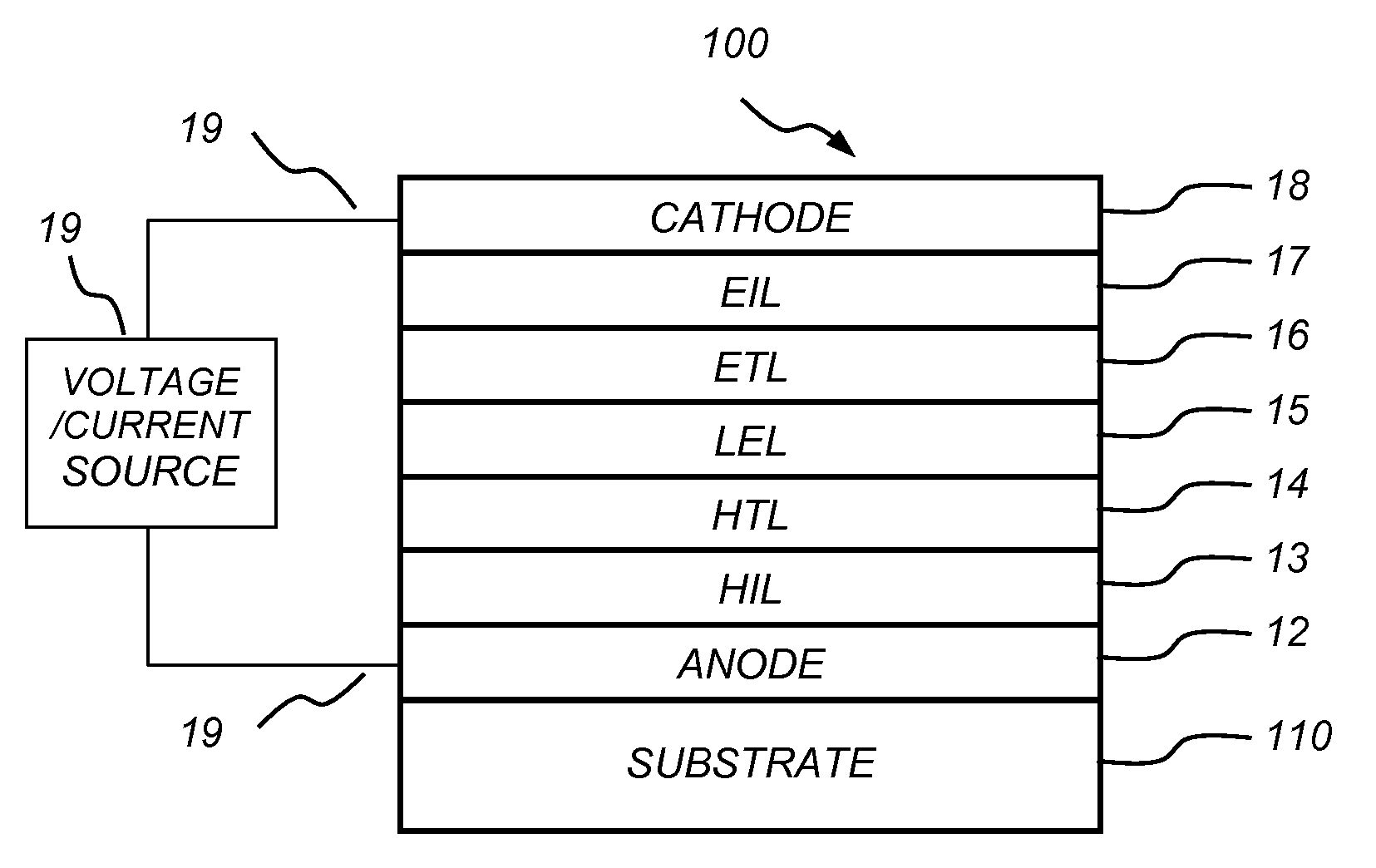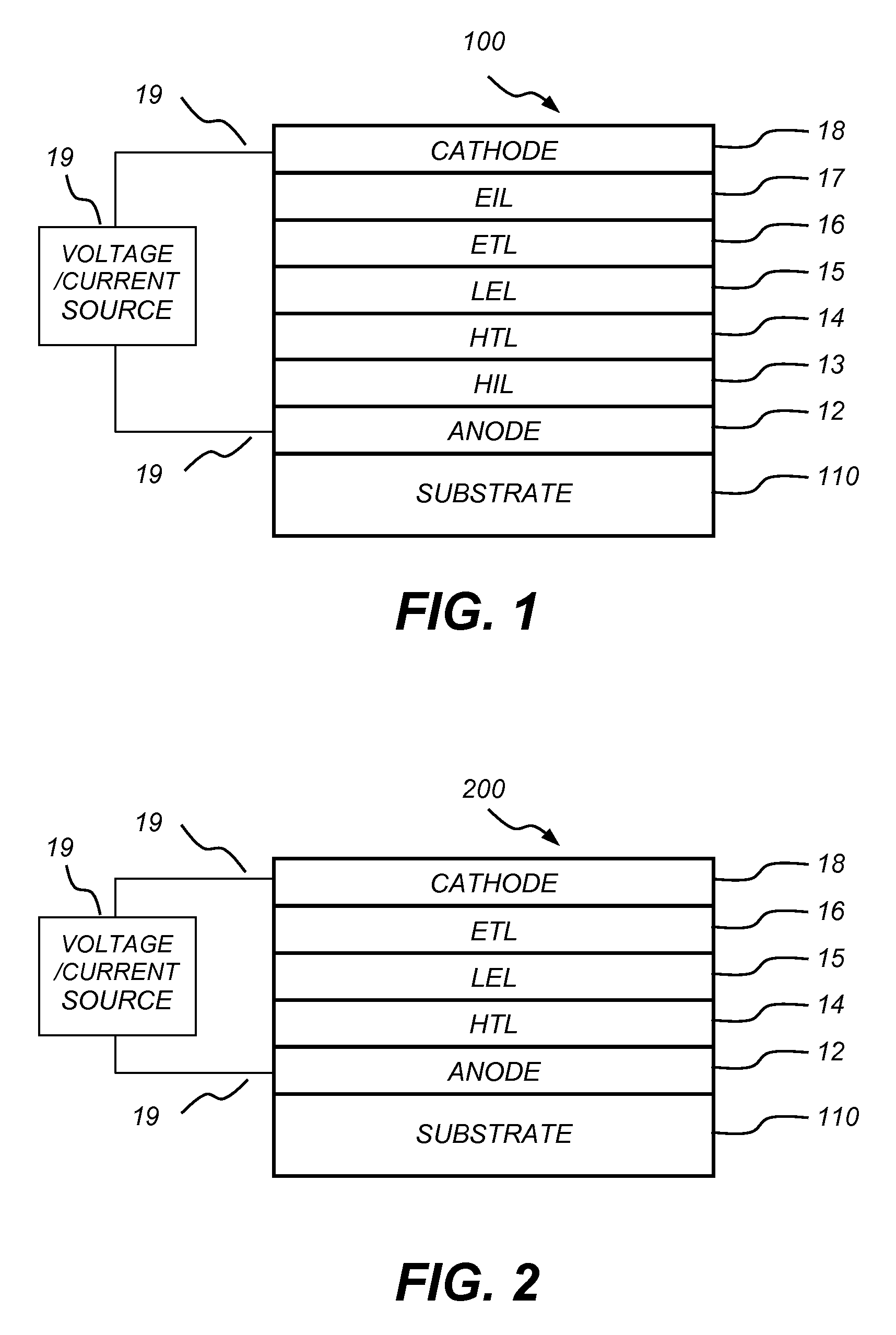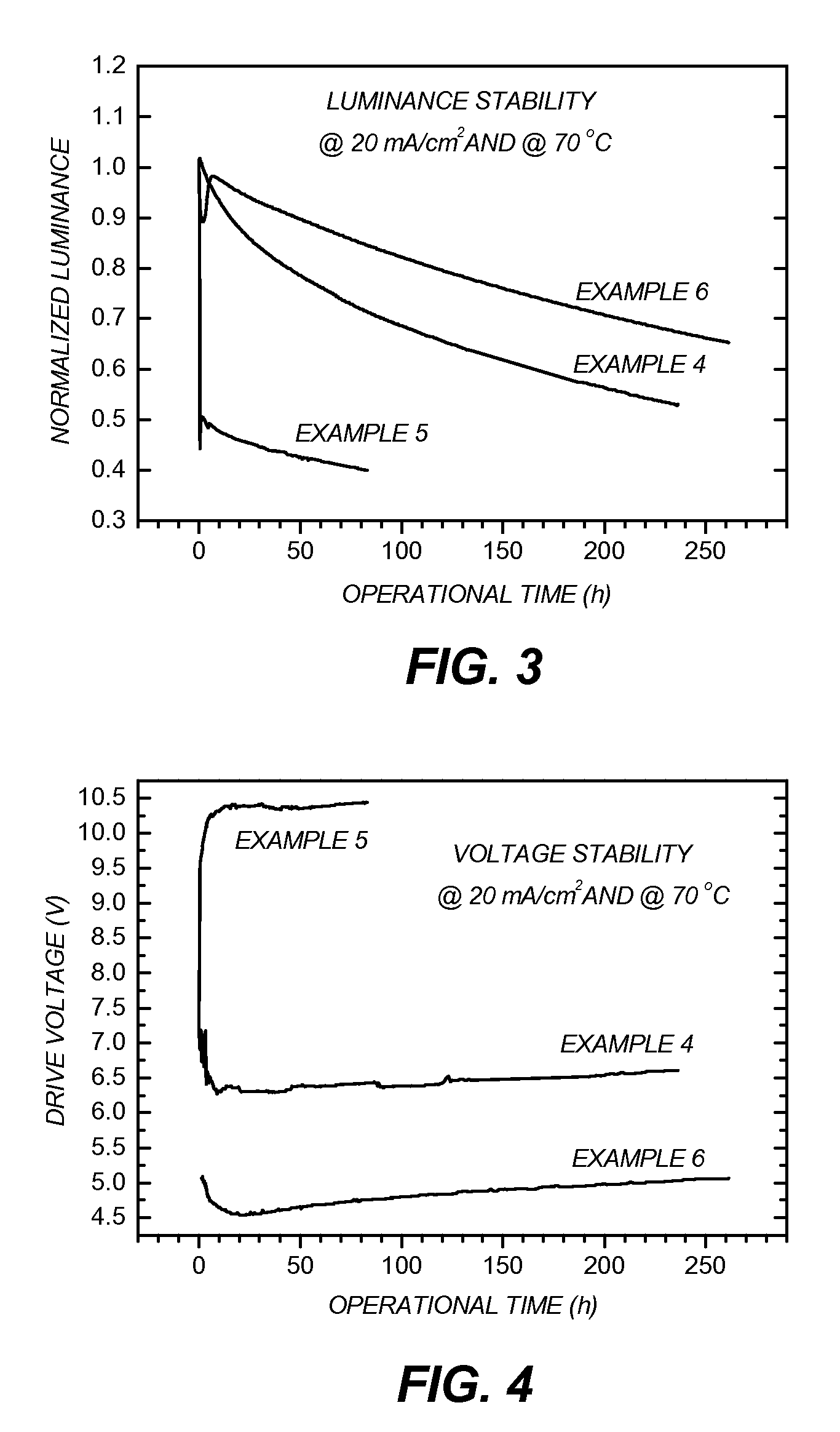Organic electroluminescent device having an azatriphenylene derivative
an electroluminescent device and azatriphenylene technology, applied in the field of azatriphenylene materials, can solve the problems of shortened device lifetime, carrier injection can deteriorate, and performance limitations have represented a barrier to many desirable applications, so as to improve the thermal stability, efficiency or lifetime of the electroluminescent device, and improve the effect of performan
- Summary
- Abstract
- Description
- Claims
- Application Information
AI Technical Summary
Benefits of technology
Problems solved by technology
Method used
Image
Examples
example 1
Synthesis of Compound 1
[0139]Sodium hydrazide (37.4 g, 0.69 mol) was made in situ from sodium and hydrazine in 100 mL of dry ether and 150 mL of isopropyl ether was added. To the reaction was added dry hydrazine (22.5 g, 0.70 mol) and benzonitrile (23.6 g, 0.23 mol) in 60 mL of isopropyl ether was added dropwise. The reaction became thick and light yellow precipitate formed. The reaction was heated at 55° C. for 2 hours. The reaction was quenched with 100 mL of water slowly, and light tan precipitate formed at the interface. The aqueous layer was saturated with potassium carbonate. The precipitate was filtered, dissolved in ethyl acetate, and dried over magnesium sulfate. The solvent was removed to give 28.5 g (92% yield) product as light beige hard solid. 1H NMR (d6-acetone) (6 in ppm): 4.32 (br, 2H), 4.75 (br, 2H), 5.45 (br, 1H), 7.34-7.41 (m, 3H), 7.60-7.63 (m, 2H), 7.78-7.81 (m, 1H).
example 2
Synthesis of Compound 2
[0140]Compound A (5.0 g, 0.022 mol) was suspended in 250 mL of ethanol and heated to reflux to be dissolved. Compound 1 (3.0 g, 0.022 mol) was added as solid. The reaction became clear in 5 minutes, and then large amount of bright yellow precipitate formed. Reaction was heated at reflux for 3 hours and cooled down. The precipitate was filtered off and washed with cold methanol to give 7.0 g (97% yield) of pure product as bright yellow silky solid. 1H NMR (CDCl3) (6 in ppm): 7.26-7.34 (m, 3H), 7.61-7.65 (m, 2H), 8.53-8.56 (m, 2H), 9.02-9.08 (m, 2 H), 9.41-9.46 (m, 2H).
example 3
Synthesis of TAPP (6-phenyl-1,5,12-triazatriphenylene, Formula I-1)
[0141]Compound 2 (7.0 g, 0.022 mol) was dissolved in 100 mL of hot o-dichlorobenze, and compound B (19.8 g, 0.22 mol) was added. The reaction was heated to reflux for 4 days. After cooling down, the reaction was poured into 600 mL of hexane and the precipitate was filtered and washed with hexane to give 6.7 g (96% yield) of crude product as light-tan fluffy solid. The crude product was sublimed to give pure product as light beige crystals. 1H NMR (CDCl3) (6 in ppm): 7.53-7.62 (m, 3H), 7.71-7.80 (m, 2H), 8.12-8.15 (m, 1H), 8.33-8.36 (m, 2 H), 8.86-8.90 (m, 2H), 9.21-9.27 (m, 2H), 9.73-9.77 (m, 1H). DSC show Tg of 78.5° C., Tm of 202.3° C., and Tc 142.2° C.
[0142]EL Device Fabrication and Performance
[0143]The following device examples are presented for a further understanding of the present invention. During the fabrication of the OLEDs, the thickness of the organic layers and the doping concentrations were controlled a...
PUM
| Property | Measurement | Unit |
|---|---|---|
| work function | aaaaa | aaaaa |
| thick | aaaaa | aaaaa |
| Tg | aaaaa | aaaaa |
Abstract
Description
Claims
Application Information
 Login to View More
Login to View More - R&D
- Intellectual Property
- Life Sciences
- Materials
- Tech Scout
- Unparalleled Data Quality
- Higher Quality Content
- 60% Fewer Hallucinations
Browse by: Latest US Patents, China's latest patents, Technical Efficacy Thesaurus, Application Domain, Technology Topic, Popular Technical Reports.
© 2025 PatSnap. All rights reserved.Legal|Privacy policy|Modern Slavery Act Transparency Statement|Sitemap|About US| Contact US: help@patsnap.com



